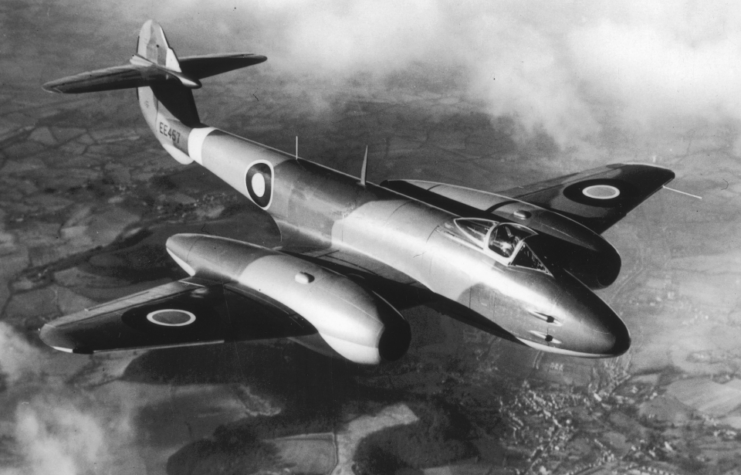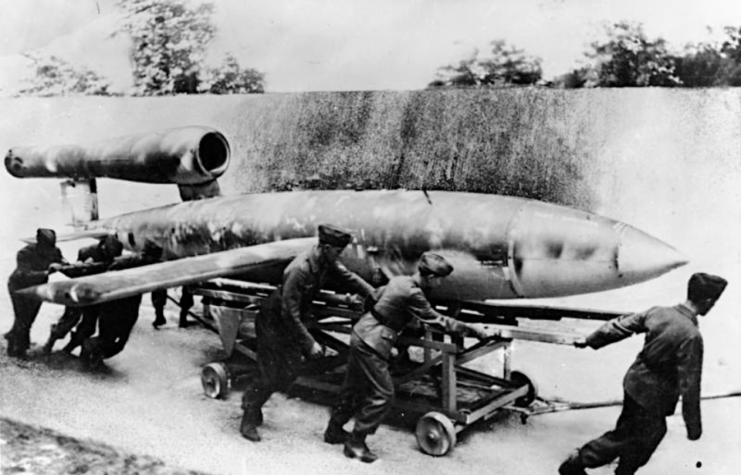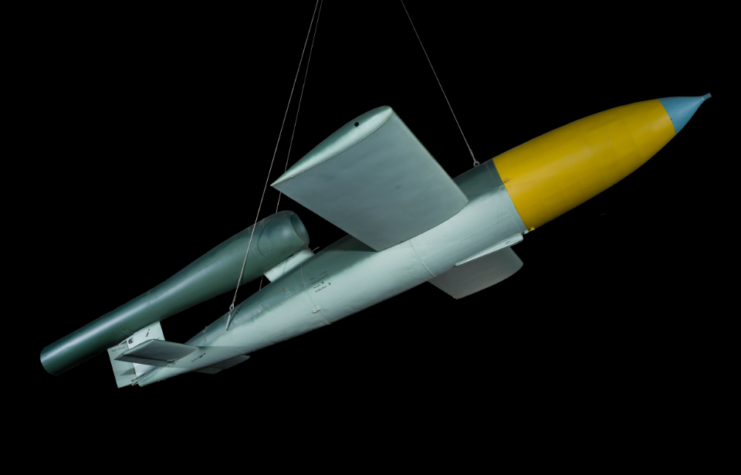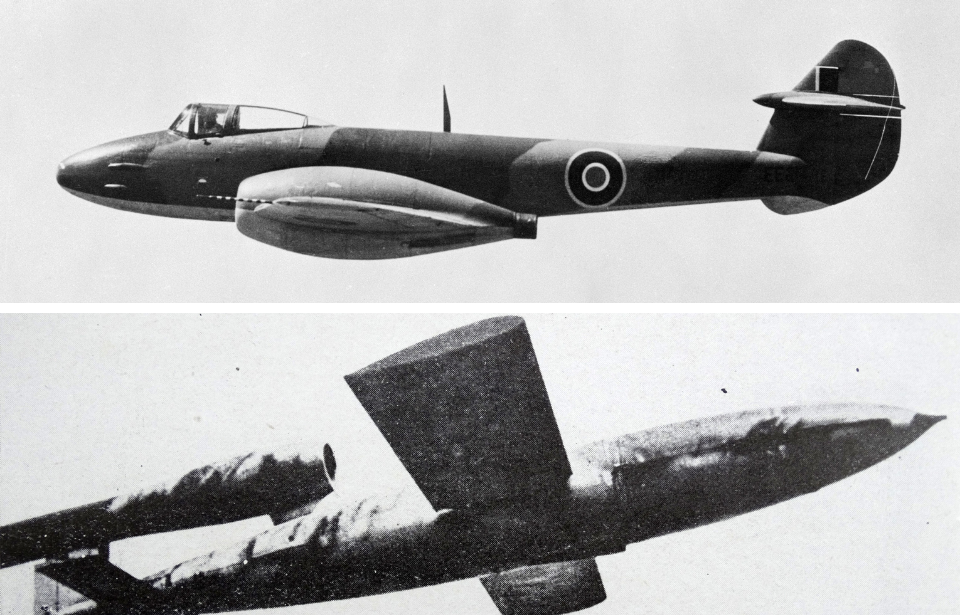The V-1 flying bomb was an early cruise missile developed by Germany as part of its V-weapons (Vergeltungswaffen) program. Starting on June 13, 1944, V-1s were launched against Britain, raining terror down on London and other cities. Flying faster than most Allied fighters, there was little that could be done to stop these incoming weapons.
The Gloster Meteor was the Royal Air Force’s (RAF) first jet fighter and the first Allied operational jet-powered aircraft. Being such a closely-guarded secret, it was retained for home defense, where it came up against the V-1 with tremendous success.
Gloster Meteor

Development of the Gloster Meteor began in 1940. However, the turbojet engine that powered the aircraft had been in the works since 1936. Frank Whittle had begun developing a jet engine and was looking for a manufacturer to build a fighter that could use it. In April 1939, he visited the Gloster Aircraft Company, where interest was shown in his ideas.
V-1 flying bomb

The V-1 flying bomb, known as the “buzz bomb” or “doodlebug,” was an early operational cruise missile. The first was launched toward London on June 13, 1944, with over 100 being sent out per day at one point, totaling 9,521 flying bombs before October 1944, when the Allies captured the final launch site in range of Britain.
The overall design of the V-1 had the appearance of a pointed torpedo, with two small straight wings and a pulsejet located above the main body, at the rear. An Argus As 109-014 Pulsejet powered the bomb, pulsing 50 times per second. This allowed the flying munition to reach 400 MPH between 2,000-3,000 feet. The engine produced a buzzing sound, hence the “buzz bomb” nickname.
Gloster Meteor versus V-1 flying bomb

An incoming V-1 flying bomb, at speeds of up to 400 MPH, was too fast for most Allied fighters to intercept – however, when the Gloster Meteor entered service, its turbojets bridged this gap, allowing for easier interception. On August 4, 1944, a month after the aircraft entered service, the aircraft scored its first two kills against the V-1.
Its first kill wasn’t scored as most would have assumed. Approaching the V-1, a Gloster Meteor pilot squeezed the trigger to fire his four cannons. Nothing happened; the guns had jammed. With the primary armament inoperable, the fighter used its speed to come alongside the flying bomb and tip it with its wing. This threw off the gyrocompass that the V-1 used to maintain level flight and crashed.
